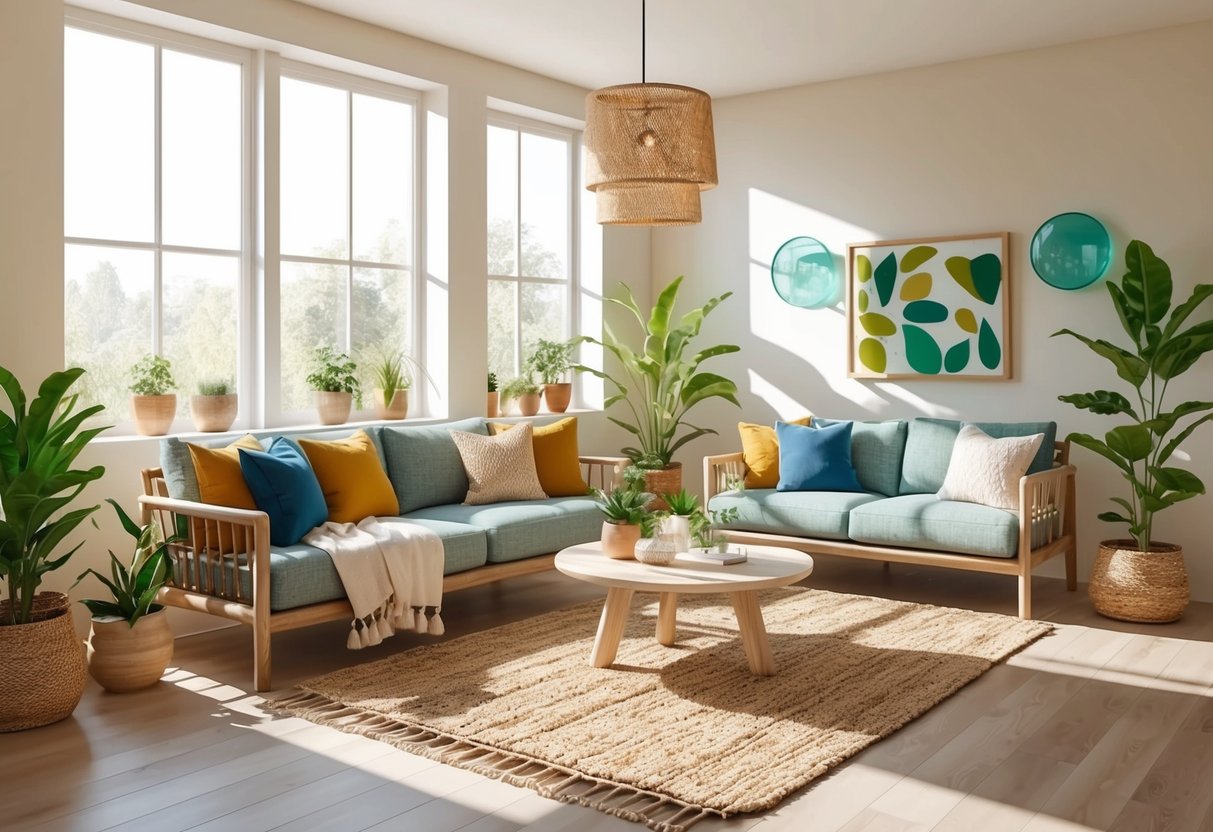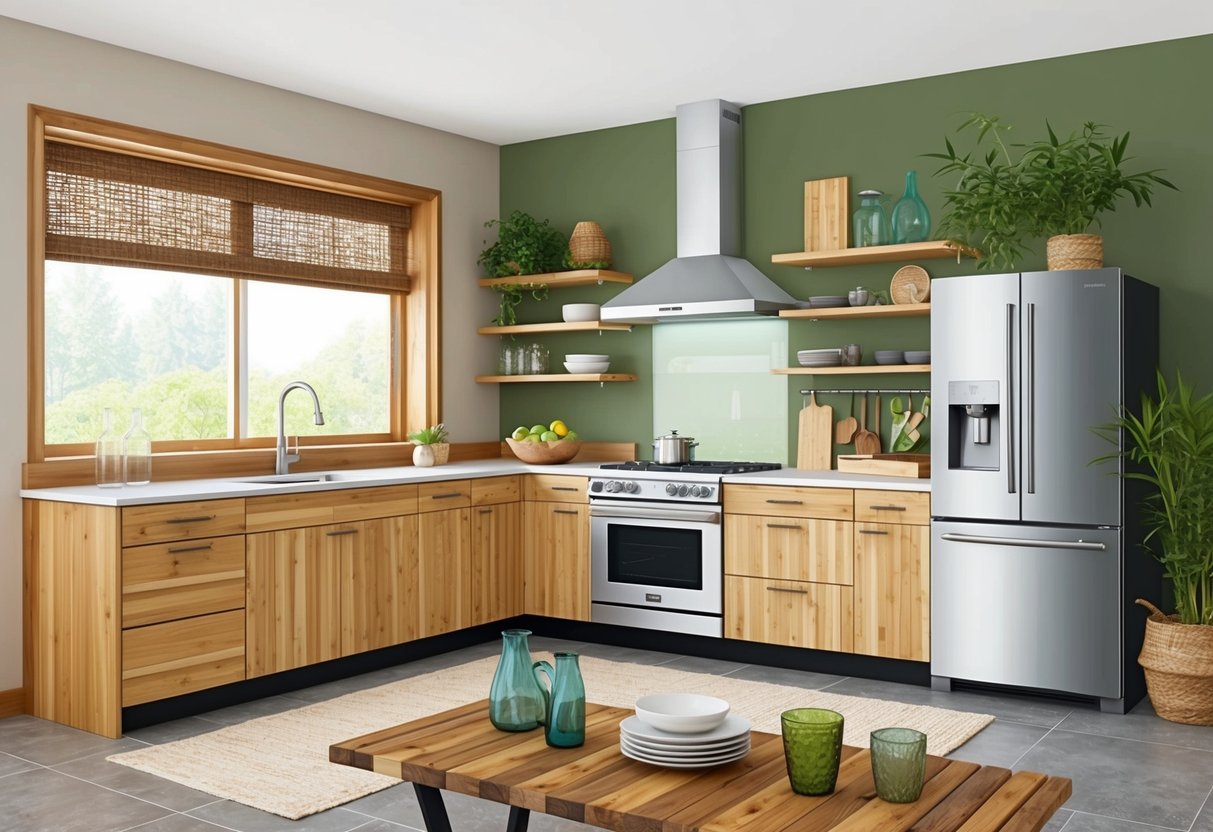
Sustainable Furniture Choices
Choosing sustainable furniture means prioritizing long-lasting, eco-friendly materials and responsible production methods. By focusing on durability, versatility, and ethical sourcing, it’s possible to create a home that supports both personal wellbeing and environmental responsibility.
Selecting Durable, Long-Lasting Pieces
Selecting furniture made from durable materials is crucial for minimizing waste and reducing replacement frequency. Hardwoods like oak, maple, and teak stand up to daily use.
Furniture constructed with traditional joinery tends to last longer than pieces held together with glue or staples. Sustainable options use non-toxic, water-based finishes and adhesives, contributing to a healthier indoor air quality.
Items built from reclaimed wood, recycled metal, and responsibly harvested bamboo are also strong choices. Homeowners should look for certifications such as FSC (Forest Stewardship Council) that guarantee materials are sourced responsibly.
Investing in well-constructed, timeless designs supports conscious design while avoiding trends that quickly go out of style.
Benefits of Modular Furniture
Modular furniture stands out for its flexibility and efficient use of resources. These customizable pieces, such as sectionals and shelving units, allow households to adapt their layouts without needing to buy new furniture when needs change.
This adaptability leads to significant reductions in landfill waste. An important advantage of modular designs is their construction—many use sustainable and recycled materials.
By choosing eco-friendly modular options, residents maximize sustainability while also ensuring each piece fits precisely into their space. Because parts can be replaced or rearranged individually, modular furniture often enjoys a longer lifespan than traditional, fixed pieces.
For more on the environmental benefits of modular options, GreenLivingLife offers insight into modular pieces and sustainable materials.
Fair Trade and Ethically Sourced Furnishings
Ethically sourced furniture accounts for how workers and communities are treated throughout the supply chain. Fair trade-certified furniture ensures that those making the products receive fair wages and operate in safe conditions.
Materials sourced responsibly are often tracked from forest to finished product, giving transparency to consumers. Look for fair trade labels or brands that detail their supply chain practices and environmental commitments.
Opting for furniture from brands with clear ethical policies not only aligns with eco-friendly choices but also promotes a more equitable marketplace. For those prioritizing both environmental and social impact, selecting fair trade and ethically sourced pieces is a conscious decision that reflects a commitment to sustainability.
Optimizing Lighting for Energy Efficiency

Energy-efficient lighting significantly reduces energy consumption and can lower utility bills over time. Selecting the right products and design strategies provides both cost savings and a healthier indoor environment.
LED Bulbs and Energy-Efficient Lighting
LED bulbs are among the most energy-efficient lighting options available. They use up to 80% less electricity than traditional incandescent bulbs, which directly reduces monthly energy costs.
Unlike compact fluorescent lamps (CFLs), LEDs turn on instantly and do not contain hazardous mercury. Switching to LEDs extends the lifespan of household lighting, with some bulbs lasting over 15,000 hours.
Many models also offer adjustable brightness or color temperatures to match any setting or mood. Smart lighting systems, which can automate schedules and dim lights when not needed, further enhance energy savings.
Consider combining LEDs with ENERGY STAR-rated lamps and lighting controls to achieve the lowest possible energy usage. For more practical guidance, see these tips on eco-friendly lighting choices.
Making the Most of Natural Lighting
Maximizing natural lighting reduces reliance on artificial lights and has a direct impact on lowering household energy usage. Features such as large windows, skylights, and solar tubes allow more daylight to enter living spaces.
Effective use of window placements and light-colored interior surfaces helps distribute daylight throughout a room. Sheer curtains or blinds can diffuse harsh sunlight while maintaining privacy.
Strategic room layouts can direct more sunlight to high-use areas, decreasing the need for artificial lighting during the day. For suggestions on optimizing window design and maximizing available daylight, visit this guide on sustainable home decor lighting.
Smart and Sustainable Appliances for the Home

Adopting smart and sustainable appliances significantly reduces a home’s energy consumption and utility bills while minimizing its environmental footprint. Choosing the right technologies and devices can streamline daily routines and increase comfort in a sustainable way.
Choosing Energy-Efficient Appliances
Energy-efficient appliances play a major role in creating a greener living space. Products with an ENERGY STAR® rating or equivalent efficiency certifications use less electricity and water compared to standard models, helping homeowners cut utility bills and emissions.
Modern refrigerators, washing machines, and dishwashers feature improved insulation, sensor-based cycles, and low-water technology. When shopping for eco-friendly appliances, prioritize models labeled for low standby power, efficient motors, and optimized resource usage.
It’s valuable to compare annual energy consumption figures and product lifecycle costs. Brands focused on sustainable design may use recyclable materials and offer easy maintenance options to extend product lifespan.
A table like the one below can help with comparison:
| Appliance Type | Key Features | Typical Savings |
|---|---|---|
| Refrigerator | Efficient compressor, insulation | Up to 20% less energy |
| Washing Machine | Low water use, fast wash cycles | 30% less water, 20% energy |
| Dishwasher | Soil sensors, eco-cycles | 15% less energy |
Learn more about identifying reliable, sustainable brands by looking for the ENERGY STAR label and government-backed certifications for eco-friendly home appliances.
Integrating Smart Home Technology
Smart home technology is now central to sustainable living. Automated systems, such as smart thermostats, smart plugs, and intelligent lighting, allow homeowners to control energy usage remotely and tailor settings to real-time needs.
These innovations reduce waste and create a more efficient household. Smart thermostats learn user habits and adjust heating and cooling schedules for optimal comfort with minimal electricity use.
Smart plugs can cut power to idle electronics, while connected lighting systems ensure lights are never left on unnecessarily. Integration with mobile apps and voice assistants enables users to monitor and manage their energy consumption effortlessly.
Smart home integration aligns with the growing demand for sustainable homes by optimizing performance and reducing overall environmental impact.